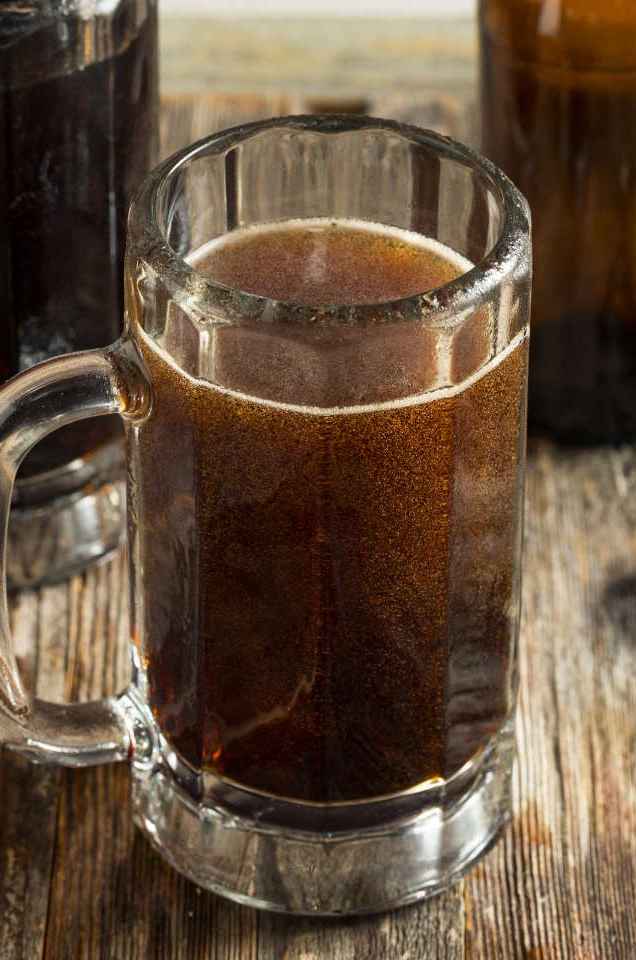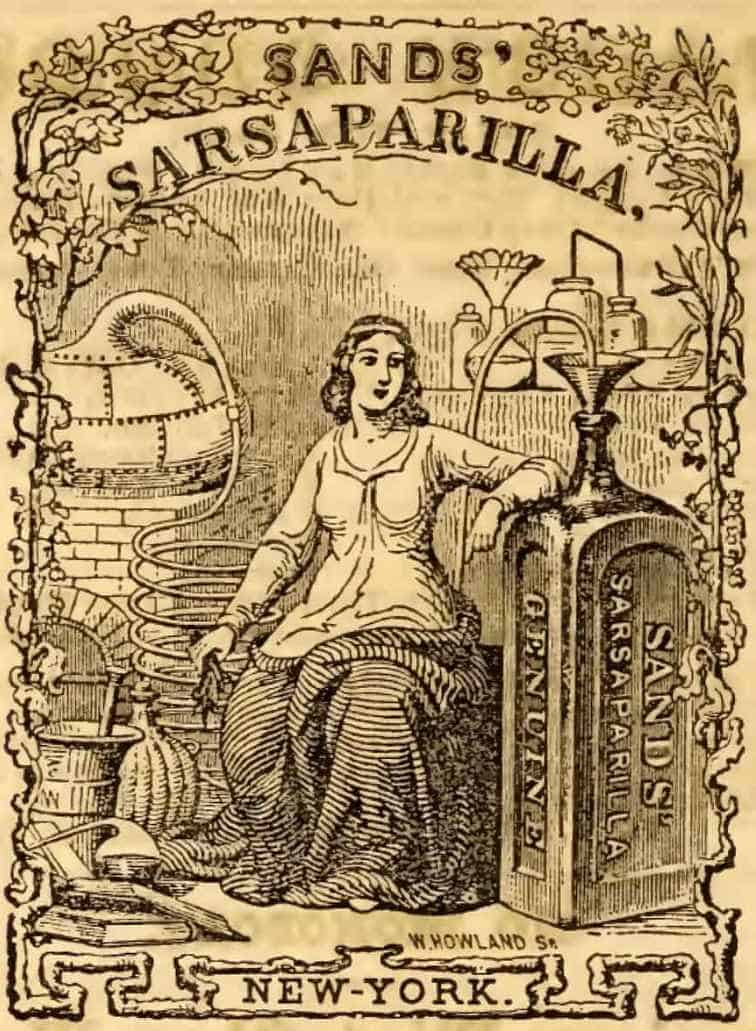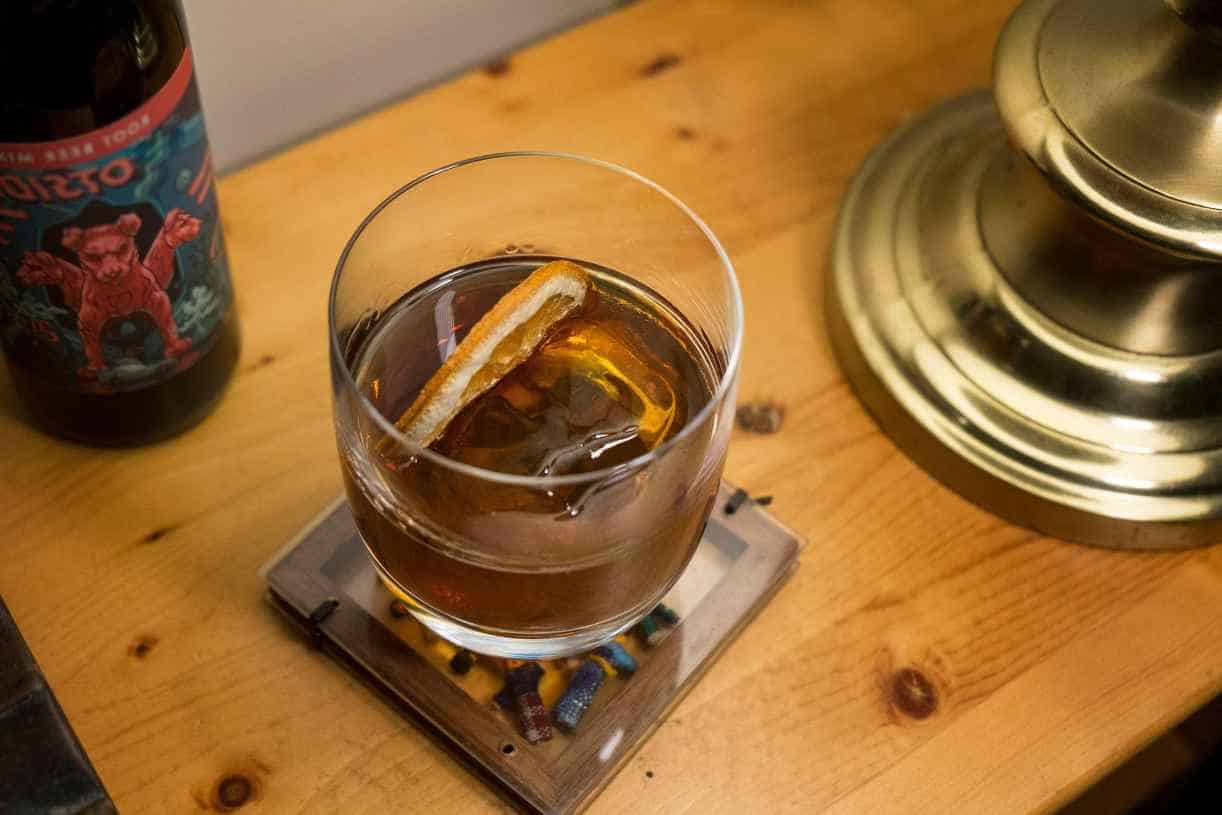Let’s talk about two timeless classic beverages that have been enjoyed for generations and generations; sarsaparilla vs. root beer. While they might seem similar to some, these two drinks actually have some distinct differences that set them apart!
From the ingredients that give them their unique flavors to the history behind them. So in this blog, we’re going to explore and compare sarsaparilla and root beer. Now get ready to dive deep into the world of carbonated beverages and discover the differences between these two beloved drinks!
Sarsaparilla vs. Root Beer
Even though Sarsaparilla and Root Beer have different origins and uses, let’s get to the main questions. What is Sarsaparilla? And What is Root Beer? So let’s dig in!
What is Sarsaparilla?
Sarsaparilla is a type of soft drink that is made from the Smilax Ornata plant or related species that continues to delight people in Southeast Asian countries—such as the Philippines and Malaysia.
Despite modern commercial production incorporating artificial ingredients—sarsaparilla’s popularity endures; with some locals even referring to it as “Sarsi” or “Sarsae.” The sarsaparilla has a small vine that has a greenish color with some dark purple-red berries.
The extract that comes from its root has a slightly bitter taste and has ingredients such as licorice and wintergreen, which were often used to reduce its bitterness.
What is Root Beer?
Root beer is a bit different from sarsaparilla because it’s made with a combination of many roots and ingredients–including cinnamon, wintergreen, and vanilla; unlike sarsaparilla, which is made using only one plant.
Root beer delights with its sweet, carbonated flavor that blends and varies from roots, barks, spices, and sweeteners, such as sugar or high-fructose corn syrup. Traditionally, root beers are often served cold. And this popular American soft drink boasts a flavor profile reminiscent of wintergreen or licorice, accented by vanilla and caramel notes.’
History and Origin of Sarsaparilla and Root Beer
Sarsaparilla and Root Beer have been around for quite some time now. And yet, a lot of people still find them as enjoyable and delicious as ever! So let us explore the rich and fascinating history behind these two powerhouses–from the day they were created up to the modern age of their production era!
Sarsaparilla and its Origin
Sarsaparilla is a beverage that originates from the Caribbean and Central American regions—which has been enjoyed for centuries by the Indigenous people who first used the root of the sarsaparilla plant (a member of the smilax family) for medicinal purposes. Later on, it became popular as a flavor for soft drinks in the 19th century.
Back in the early 1800s, sarsaparilla was a sought-after drink, not only at local bars but also as a home remedy. Though it may no longer be a staple in the United States, sarsaparilla can still be purchased through specialty stores online.
The name “sarsaparilla” originates from the Spanish word “Zarzaparrilla,” meaning “brambly vine,” and it was a well-known beverage—not until root beer’s creation. It’s said that root beer was born out of dissatisfaction with the taste of sarsaparilla!
Even though many people are not satisfied with how sarsaparilla tastes, it is still a popular drink to this day.
History of Root Beer
Root beer is a sweet beverage from North America, and it is made traditionally with the root bark of the smilax ornata vine or the Sassafras tree. You might be thinking, “is root beer really made from sarsaparilla?”
You are right! Nevertheless, it is added with a lot more ingredients, and it is typically sweet, carbonated, and usually not alcoholic and caffeine-free. However, later on, the FDA (Food and Drug Administration) found out that the sassafras tree has some volatile oils that can cause cancer, so they prohibited manufacturers from ever using this type of plant again—which resulted in a more modern version of the root beer.
The modern version of root beer now includes artificial flavoring and sweeteners such as honey, sugar, molasses, aspartame, and maple syrup. They also add a preservative known as sodium benzoate.
It was first introduced commercially in 1875 by Charles Elmer Hires and root beers were supposedly named as “root tea,” but they ended up using the name root beer to boost the sale among the coal miners in Pennsylvania.
More information about the history of root beer.
What is healthier between the two? What are their different benefits?
Sarsaparilla and root beer are both carbonated drinks but are slightly different from each other. However, when it comes to their health benefits. We concluded the sarsaparilla is way healthier among the two.
Since sarsaparilla has herbs that are beneficial to our human bodies, it helps our body to reduce some kind of joint pain and skin itching—which also kills bacteria. It also consists of other chemicals that are somehow helpful when it comes to preventing liver damage or even reducing inflammation.
There’s a previous study wherein sarsaparilla contains anti-cancer and antitumor properties, which are active in sarsaparilla. However, a thorough research with backing data is still needed in order to prove that sarsaparilla can prevent and treat cancer.
Regarding arthritis, sarsaparilla has a factor—an anti-inflammatory, which is very useful for treating rheumatoid arthritis and other joint pains. In protecting your liver, sarsaparilla also has a component that shows how it protects your liver from diseases.
A few researchers conducted an experiment involving rats with liver damage, and they concluded that sarsaparilla has a components that are rich in flavonoids that causes to reverse the liver damage into a better-functioning liver.
On the other hand, root beer also offers excellent benefits for us. Unlike other carbonated drinks—which can cause kidney damage or failure, root beers are almost 100% okay for your two kidneys.
It contains a modest amount to no phosphorus at all, making it the best option if you want to drink a carbonated drink but you’re suffering from chronic kidney disease.
Hence, you should still drink in moderation since root beer also contains sugars!
Therefore, if you are monitoring your sugar intake, limiting a root beer is your best choice. On the contrary, root beers used to be a medicine if you were having a cold or stomachaches. And in addition, home-brewed root beers can aid the treatment if you’re suffering from ulcers.
Nutrition Facts of Sarsaparilla VS Root Beer
Do you want to keep tabs on the nutrition facts of your favorite root beer or sarsaparilla drink? Then we’ve got you covered! We’ve created a handy table guide filled only with real and legitimate information just for you.
So whether you’re monitoring your intake or just curious about their nutrition facts, simply refer to this guide. Let’s dive in!
Sarsaparilla Nutrition Facts
So for every drink you intake—whether it’s canned or bottled with its serving size is 16oz or 493g, the sarsaparilla has the following nutrition content that you should somehow remember.
| Total Calories: 202 | g/mg | Daily Value |
| Total Fat | 0g | 0% |
| Trans Fat | 0g | |
| Saturated Fat | 0g | – |
| Sodium | 64.1mg | 3% |
| Cholesterol | 0mg | 0% |
| Protein | 0g | 0% |
| Total Carbohydrate | 52.3g | 17% |
| Dietary Fiber | 0g | 0% |
| Total Sugar | 52.3g | 105% |
| Added Sugars | – | 0% |
| Vitamins | – | – |
| Phosphorus | 0mg | 0% |
| Vitamin C | 0mg | 0% |
| Vitamin D | 0mcg | |
| Iron | 0.2mg | 1% |
| Potassium | 4.9mg | 0% |
| Calcium | 24.7mg | 2% |
Root Beer Nutrition Facts
Let’s talk about root beer now. Just like sarsaparilla, it’s very important to know what nutrients you’re consuming, so here’s a comprehensive nutrition guide—that we made for you.
Remember that each serving size of root beer is 16oz or 493g, so you’ll know exactly what you’re drinking!
| Total Calories: 202.1 | g/mg | Daily Value |
| Total Fat | 0g | – |
| Protein | 0g | – |
| Potassium | 4.9mg | 1% |
| Sodium | 64.1mg | 3% |
| Carbohydrates | 52.3mg | – |
| Sugar | 52.3g | – |
| Net carbs | ||
| Fiber | 0 | 0% |
| Vitamins and Minerals | – | – |
| Vitamin A | 0g | 0% |
| Vitamin B | ||
| Vitamin C | ||
| Vitamin D | ||
| Vitamin E | ||
| Vitamin K | ||
| Water | 440.2g | – |
| Caffeine | 0mg | – |
| Choline | 1.5mg | 1% |
| Calcium | 24.7g | 3% |
| Folate | 0g | 0% |
| Iron | 0.2mg | 4% |
| Niacin | 0mg | 0% |
| Magnesium | 4.9mg | 2% |
| Riboflavin | 0mg | 0% |
| Phosphorus | ||
| Lycopene | 0g | – |
| Zinc | 0.3mg | 3% |
| Retinol | 0g | – |
| Copper | 0mg | 2% |
| Selenium | 0.5μg | 1% |
| Fluoride | 350μg | – |
| Manganese | 0.1mg | 4% |
Side-by-Side Comparison (Sarsaparilla vs. Root Beer)
Now that we’re here at the last part of the main topic, here’s a side-by-side comparison between the two regarding on their history, definition, components, flavor, health benefits, and what type of carbonated drink they are.
| Root Beer vs. Sarsaparilla | ||
| Their Differences | Root Beer | Sarsaparilla |
| History | Charles Elmer established this drink during 1875 | Started in Native America |
| Taste | Smooth, has a light aftertaste, sweet | Has a bitter taste, a vibrant aftertaste, and unique |
| Components | Sarsaparilla plant that has vanilla, wintergreen, cinnamon, anise, honey, and aspartame | Vine from Sarsaparilla |
| Health Benefits | Treatment for colds, stomachaches, and ulcers. Good for the kidney. | Has an anticancer and antitumor component. It can cure anti-inflammatory diseases. |
| Form | Carbonated or non-carbonated drinks. It can also be an alcoholic drink | Non-alcoholic drink |
| Description | Came from sassafras plant | Came from Zarzaparilla |
Final Thoughts
In conclusion, sarsaparilla and root beer are both popular drinks, but it’s important to be aware of their nutritional content! While sarsaparilla and root beer have some similarities, they also have differences in terms of their flavor and ingredients.
So ultimately, it’s up to you to decide which one to choose based on your personal preferences and nutritional needs.
That’s it for our blog regarding Sarsaparilla vs. Root Beer. We hope we did a great job helping you the difference between the two. So go ahead, take a sip, and enjoy!

As a homebrewer, Michael would get frustrated about the lack of brewing information on the internet. After hundreds of gallons of spoilt batches, Micheal had enough. And he founded Unknown Brewing as a resource for homebrewers.








